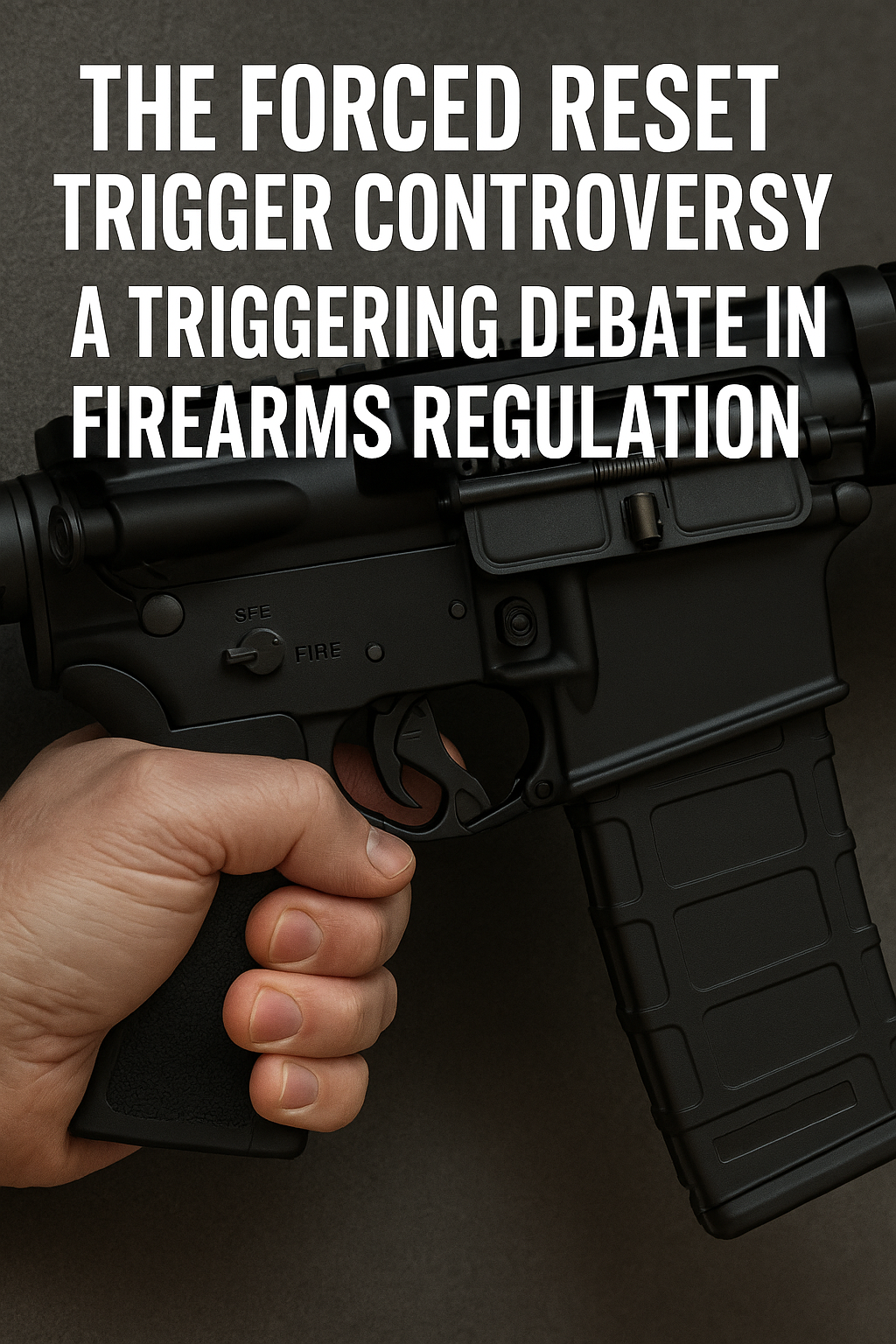The Forced Reset Trigger Controversy: A Triggering Debate in Firearms Regulation
The Forced Reset Trigger (FRT) has been one of the most contentious gadgets to spark discussion in the firearms community in recent years. Some people think it’s an ingenious engineering feat that increases shooting speed. Others, especially federal authorities, view it as a risky workaround that successfully imitates a machine gun. FRTs have emerged as a hot topic in the discussion of gun rights, safety, and regulation as gun control issues continue to polarise public and political opinion.
What is a Forced Reset Trigger?
One kind of trigger technology that enables a semi-automatic rifle to fire more quickly than conventional triggers is a forced reset trigger. The trigger is mechanically “forced” to reset rapidly after each shot, enabling the shooter to pull it again in quick succession. Technically, the shooter is still pushing the trigger once for each bullet fired, therefore this is not full-auto or burst fire.
The twist is that the rate of fire can be so quick that it roughly resembles full-auto fire because of the incredibly quick reset and the way these triggers work. Forced reset triggers are being closely examined because of this blurring of the boundaries between semi-automatic and automatic functionality.
The ATF’s Stance and Crackdown
In an open letter published in March 2022, the Bureau of Alcohol, Tobacco, Firearms and Explosives (ATF) stated that some FRTs, particularly those made by Rare Breed Triggers, are considered machine guns under federal law. ATF claims that these accessories enable a firearm to fire several rounds with a “single function of the trigger,” which is what the National Firearms Act (NFA) legally defines as a machine gun.
This proclamation caused a great deal of controversy in the weapons world, as well as litigation and raids. Rare Breed Triggers soon found itself embroiled in a legal dispute, claiming that their FRT-15 trigger does not qualify as a machine gun and is completely compliance with federal law.
The Legal Tug of War
Rare Breed Triggers has been embroiled in a legal battle with the federal government, among other manufacturers and gun rights organisations. The concept of a “single function of the trigger” is the main point of contention.
According to the firearms industry, a forced reset trigger is lawful because the user must still squeeze the trigger each time a cartridge is fired. The forced reset mechanism, according to ATF, effectively automates the firing process in a way that contravenes the letter, if not the spirit, of the law. This claim is based on the mechanical behaviour of the trigger and the handgun as a whole.
Due to the grey area caused by this legal ambiguity, the status of forced reset triggers is still up in the air until the courts or Congress issue a final decision.
What Does This Mean for Gun Owners?
The controversy around forced reset triggers draws attention to a more significant problem with gun control: rules are not keeping up with the rapid advancement of technology. This creates uncertainty for gun owners. Are you in possession of an unregistered machine gun or a permissible attachment if you own a FRT?
Significant questions concerning due process and regulatory overreach are raised by reports that the ATF has confiscated FRTs from dealers and private citizens, categorising them as unlawful machine guns. Many in the gun rights community contend that such actions criminalise persons without explicit statutory support and circumvent the legislative process.
Conversely, proponents of gun regulation contend that the widespread use of devices such as FRTs creates a loophole that impedes efforts to prevent gun violence, especially mass shootings, by increasing access to high fire rates.
What’s Next?
The courts are still working it out as of right now. The system is currently considering legal objections, and any decision would probably establish a standard for future treatment of cutting-edge trigger technologies.
ATF is still enforcing the law in the meantime, and some gun owners have taken precautions by removing or destroying their FRTs. Gun manufacturers and retailers are also exercising caution; many have taken the weapons off the market to stay out of legal hot water.
Conclusion: A Trigger for Change?
The argument over forced reset triggers is about the changing relationship between gun technology, federal regulation, and constitutional rights, not just about a single piece of hardware. Similar to the bump stocks and pistol braces that came before them, FRTs are a new frontier in weapons innovation that pushes the limits of current legislation.
This trigger is still very much in motion, so keep an eye on it.
